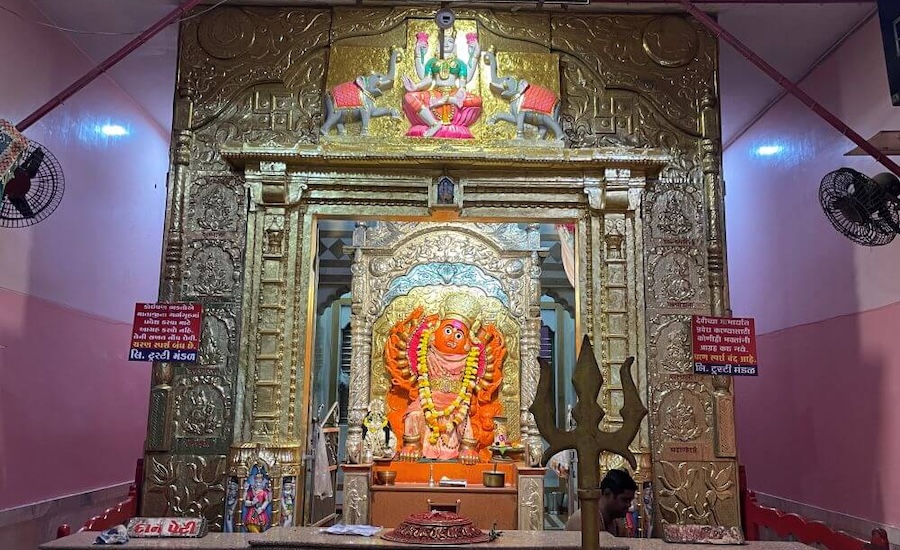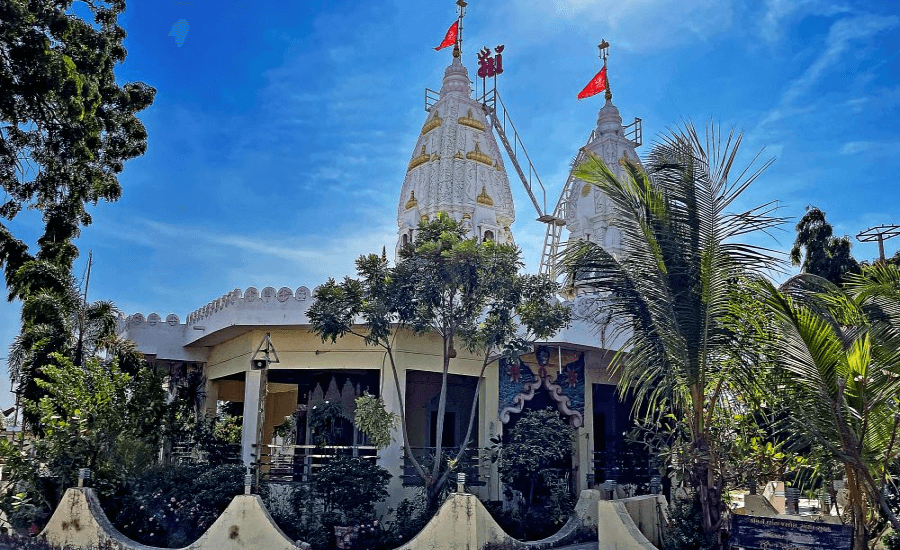
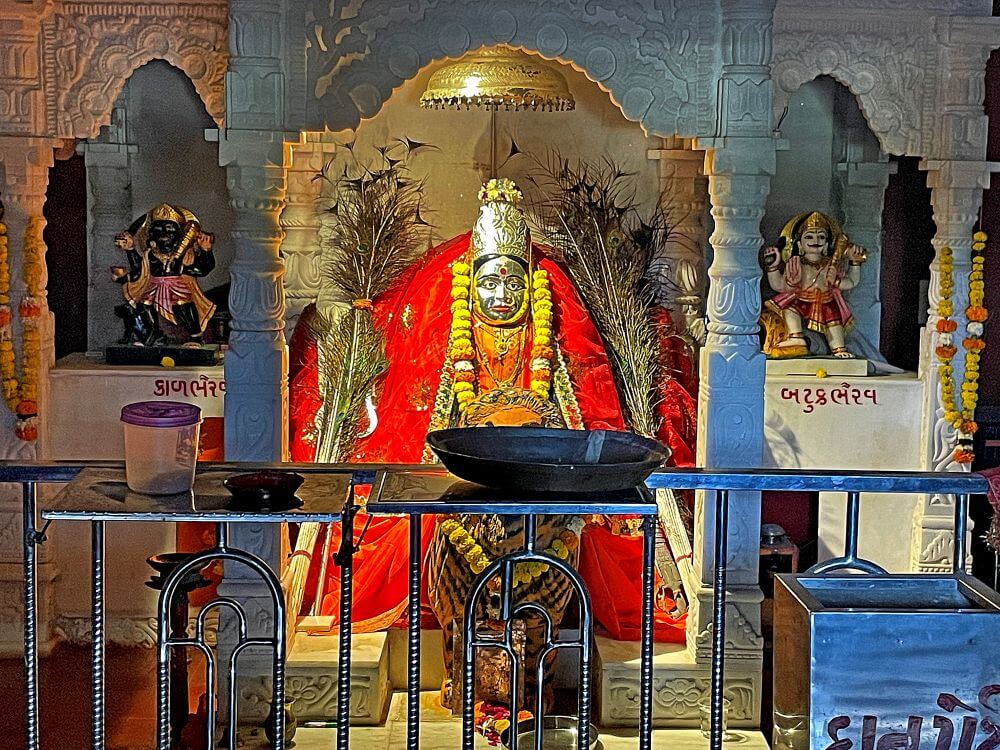 The Khuntai Mata Temple, situated between Olpad and Hathisa villages in Surat district, is a historic shrine dedicated to Khuntai Mata, regarded as the protector of elephant stables (gajshala). The temple derives its name from the deity’s role in safeguarding the elephants’ stakes ( Khunta means stake in Gujarati). Devotees believe that this sacred site fulfils wishes and grants offspring to childless couples who worship the deity with devotion. During the Navratri celebrations, the temple attracts large numbers of devotees.
The Khuntai Mata Temple, situated between Olpad and Hathisa villages in Surat district, is a historic shrine dedicated to Khuntai Mata, regarded as the protector of elephant stables (gajshala). The temple derives its name from the deity’s role in safeguarding the elephants’ stakes ( Khunta means stake in Gujarati). Devotees believe that this sacred site fulfils wishes and grants offspring to childless couples who worship the deity with devotion. During the Navratri celebrations, the temple attracts large numbers of devotees.
The temple’s origins date back to 1754, during the reign of the Gaekwad dynasty. Damaji Gaekwad, who became the independent ruler of Gujarat under the Peshwas, established a massive elephant stable in the region now called Hathisa.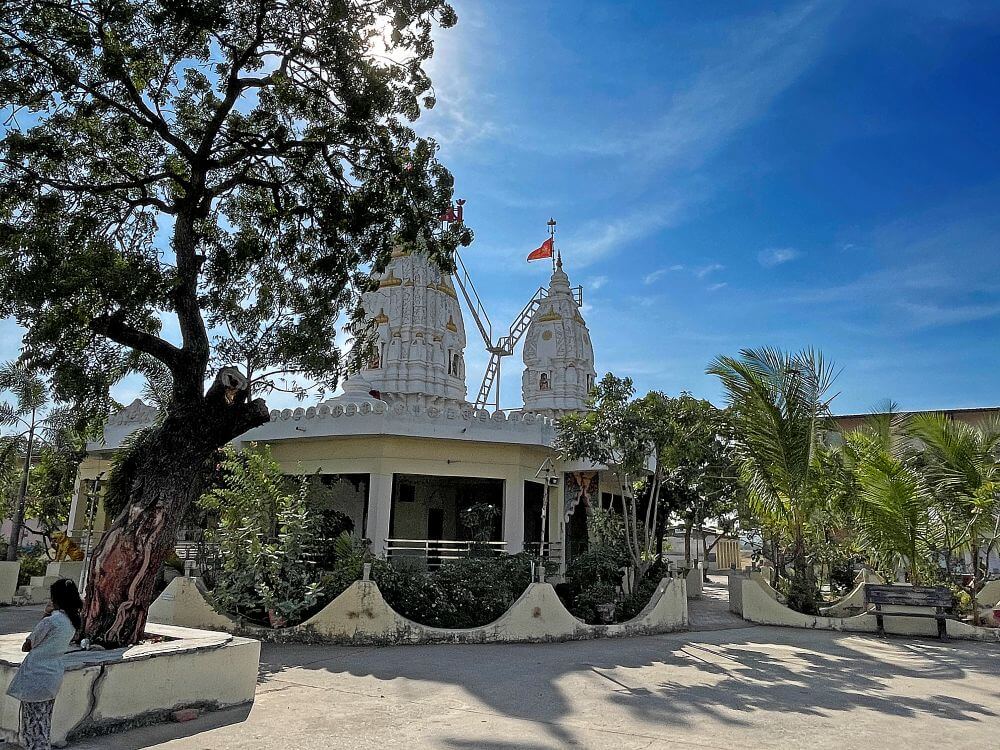 To protect the stables, the idol of Khuntai Mata was installed. Over time, the deity came to be known by other names, such as Nandka Mata and Ghardha Mata. Initially, the temple was maintained by Brahmin priests, followed by the Parekh family. Since 1952, the Khuntai Mataji Trust has managed the temple’s affairs following its renovation.
To protect the stables, the idol of Khuntai Mata was installed. Over time, the deity came to be known by other names, such as Nandka Mata and Ghardha Mata. Initially, the temple was maintained by Brahmin priests, followed by the Parekh family. Since 1952, the Khuntai Mataji Trust has managed the temple’s affairs following its renovation.
Nestled in a serene, picturesque setting near a pond, the temple features a sprawling courtyard paved with tiles and adorned with lush greenery. The temple’s architecture is remarkable, comprising a spacious, open Sabhamandap (assembly hall) and a sanctum at its centre. The temple boasts two ornate shikharas (spires), painted in pristine white with golden accents. The spires, designed in the Urushringa style, feature smaller spire replicas atop the main structure, giving the appearance of a mountain range. 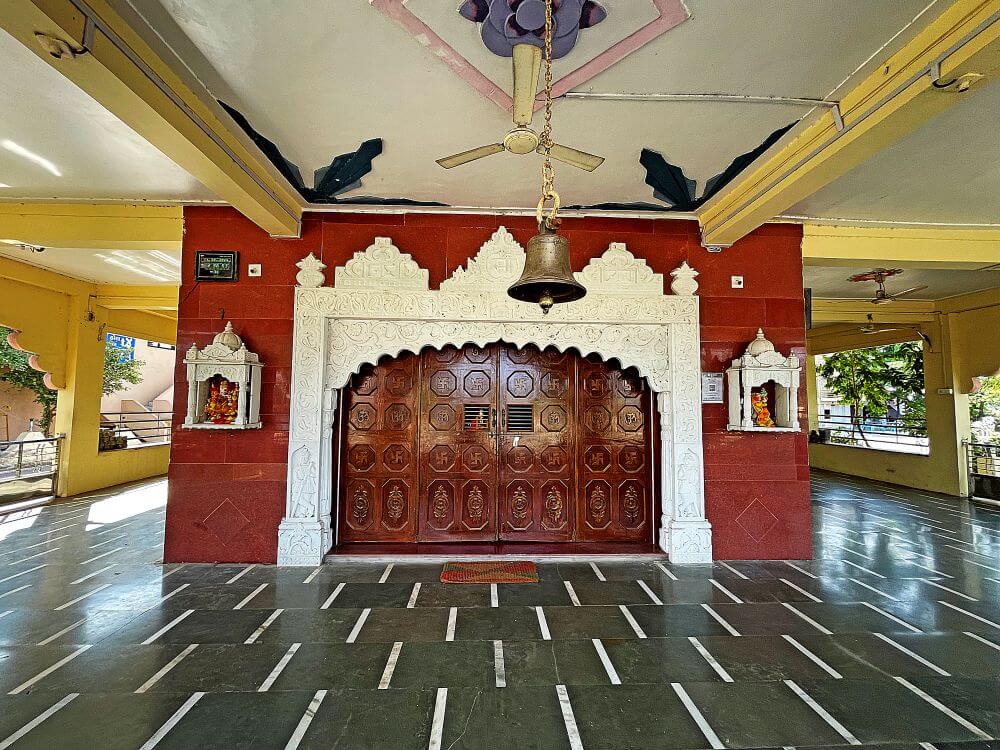 Around the spires are small devakoshtas (niches) housing idols of various deities.
Around the spires are small devakoshtas (niches) housing idols of various deities.
The arched entrance of the Sabhamandap is flanked by tiger sculptures on raised platforms, with a lion’s face at the centre of the arch. The sanctum’s entrance is a wide wooden door, while the sanctum walls are clad in white marble. To the left of the sanctum entrance is a niche with Ganesha’s idol, and to the right, one with Hanuman’s idol.
Inside the sanctum, a stunning marble shrine houses the idol of Khuntai Mata, depicted riding a tiger. The idol, adorned with silver masks and a gold crown, is draped in exquisite garments and jewellery. A silver canopy rests above the idol. Adjacent to the main idol are black stone idols of Kalabhairava on the left and a white idol of Batuk Bhairava on the right.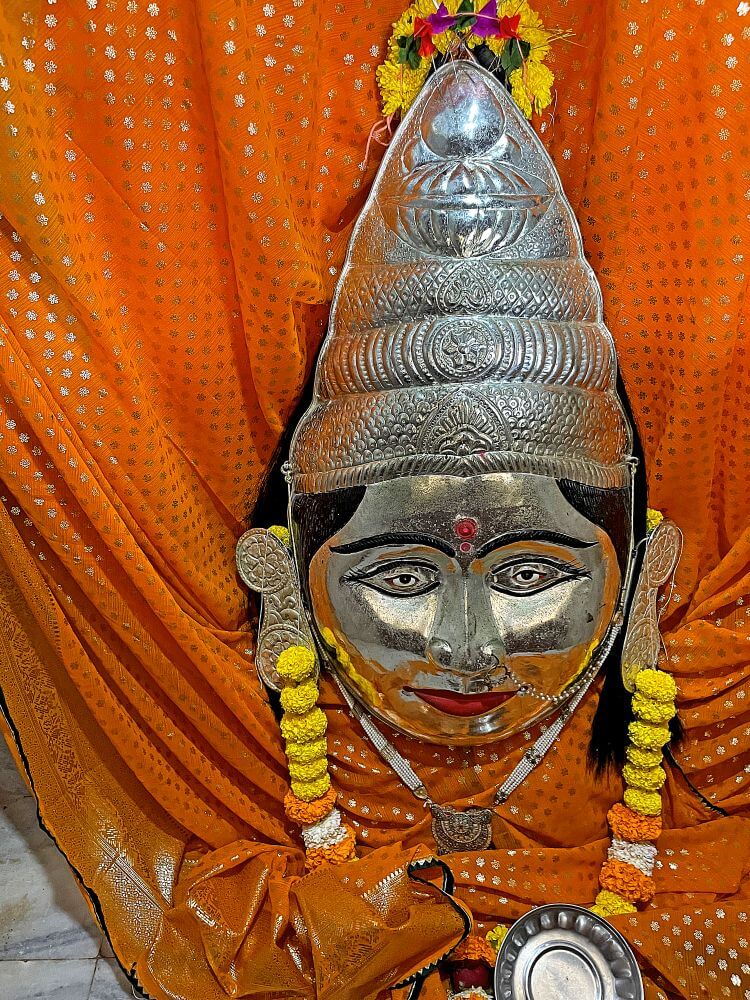 Nearby, on the floor, a small Shivling is placed.
Nearby, on the floor, a small Shivling is placed.
In a niche adjoining the sanctum, the idol of Kunti Mata, adorned with a silver mask, is enshrined. A bouquet of peacock feathers flanks the idol on both sides. The walls of the sanctum feature plaques detailing the temple’s significance, along with old photographs of the temple. The temple complex also includes a gaushala (cow shelter) and a small children’s park.
Khuntai Mata is venerated as a deity who fulfils the wishes of her devotees. The temple remains open for darshan (viewing) throughout the day, except from 12:00 PM to 3:00 PM. Regular rituals and offerings are performed, and the temple hosts several festivals and religious events throughout the year.
The annual anniversary festival in February is marked by grand celebrations, including a Navchandi Yagna and other religious ceremonies. Devotees are served Mahaprasad(sacred food) during this event. A grand procession is also taken out, drawing thousands of devotees.
The temple celebrates four (Chaitra, Aashadha, Ashwin and Maagh) Navratris throughout the year, with the Chaitra and Sharadiya (Ashwin) Navratris being the most prominent. These festivals feature a range of religious and cultural programmes, and the deity is adorned with special decorations daily. On the eighth day of Sharadiya Navratri, a large fair is held. Garba (a traditional dance) is performed with great enthusiasm on Dussehra, attracting devotees from far and wide.
